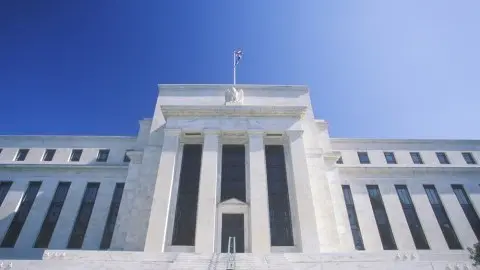Brazil: No room for rate cuts just yet
Central bankers seem reluctant to ease monetary policy, despite the poor activity prints seen lately. With passage of fiscal legislation still uncertain, rate cuts would be premature, hurt the bank’s credibility and fail to stimulate the economy. A major dovish shift is possible as early as July, however, if the social security reform is approved.
Uncertainty regarding the fiscal consolidation agenda continues to call for caution
Recent statements by central bank officials show a strong resistance to considering rate cuts at this stage. This shows up primarily in their diagnosis of the poor GDP growth prints seen recently, which are justified by several factors, particularly the persistent uncertainty regarding Brazil’s fiscal outlook. But the central argument that officials seem to be making is that rate cuts would not be effective to stimulate growth right now.
With the fiscal consolidation effort critically dependent on the still-uncertain passage of the social security reform in Congress, rate cuts would be premature, hurt the central bank’s hard-won credibility and, ultimately, fail to stimulate the economy.
As a result, we expect the central bank to keep the SELIC rate unchanged, at 6.5%, at next Wednesday's monetary policy meeting.
The post-meeting statement could be tweaked slightly, in acknowledgement of the frustration with the economic activity, but we are afraid that investors expecting a decisive dovish shift may be disappointed.
For now, we expect bank officials to maintain the current “neutral” guidance largely unchanged, characterizing the balance of risks to the inflation outlook as “symmetrical”. This should give bank officials maximum optionality to implement policy changes once the outlook for the social security reform is altered, in the coming weeks.
A more aggressive dovish shift is possible, after next week’s meeting
Once fiscal uncertainties are addressed, with the passage of the social security reform, possibly by mid-July, Brazil’s inflation outlook should undergo a large-enough improvement, we suspect, to prompt central bank officials to launch a new easing cycle. This vote should be the biggest catalyst for price action in the coming months.
With inflation likely to drop to less than 3.5% YoY next month, thanks to a specially favourable base-effect in June and lower energy prices, fully-anchored inflation expectations and improved inflation forecasts, largely on the back of the expected appreciation of the BRL, monetary authorities would have strong arguments to re-launch the easing cycle as early as the July 31 meeting, if the reform has been approved by then.
Central bank surveys reinforce prospects for fully-anchored inflation and a delayed recovery
Our base-case is that the reform will be approved late in August/early September, therefore the first rate cut would take place only in the September 18 meeting, but the risk of an earlier approval of the reform, and an earlier cut, has increased.
Given the heavy long-USD positioning by local investors, who have used the USD as a hedge for their overweight positioning in other local assets (equity/bonds), if a confidence-boosting social security reform is approved, the BRL could undergo a particularly strong rally, possibly overshooting towards the 3.3-3.4 range in a relatively short period of time.
The persistently wide output gap, with large spare capacity seen in both industrial activity and labour market, and with prospects for considerable fiscal tightening in the foreseeable future, the SELIC rate can be cut by at least 100bp further, without risking turning the policy mix excessively loose.
In fact, the approval of a strong social security reform, a strong BRL and dovish action by global central banks suggests that BACEN could follow its Chilean counterparts and opt for a frontloaded adjustment. As such, two 50bp rate cuts could be an appropriate course of action, when compared to alternatives of 25bp and 100bp.
Social security reform debate reaches its most critical stage
The social security reform debate is now reaching its final stage in the Brazilian Lower House. The Lower House Special Committee presented today the amended draft proposal, which incorporates a relatively moderate dilution in the expected fiscal savings, when compared to the ambitious initial proposal by the Bolsonaro administration. The new proposal matches the BRL1.1tr 10-year adjustment included in the original proposal, but part of that adjustment now comes from higher taxes.
A firm voting schedule has not been agreed upon yet, but the committee could vote on this new proposal by next week. This could pave the way for the all-important first-round vote by the entire Lower House to take place during 1H July, i.e. before the 1-month mid-year recess that starts mid-July.
Our base-case scenario though is still that this vote will place after the mid-year break, in the second half of August. In this case, the reform could reach the Senate by mid-September and be fully concluded by November.
The political momentum has improved, with support for the reform broadening, but pressure by special-interest groups suggests that much can still change until the reform becomes law, with the risk of erosion in the projected savings from the reform staying elevated in the coming weeks.
Download
Download article
13 June 2019
In case you missed it: The ‘Powell put’ This bundle contains 9 Articles"THINK Outside" is a collection of specially commissioned content from third-party sources, such as economic think-tanks and academic institutions, that ING deems reliable and from non-research departments within ING. ING Bank N.V. ("ING") uses these sources to expand the range of opinions you can find on the THINK website. Some of these sources are not the property of or managed by ING, and therefore ING cannot always guarantee the correctness, completeness, actuality and quality of such sources, nor the availability at any given time of the data and information provided, and ING cannot accept any liability in this respect, insofar as this is permissible pursuant to the applicable laws and regulations.
This publication does not necessarily reflect the ING house view. This publication has been prepared solely for information purposes without regard to any particular user's investment objectives, financial situation, or means. The information in the publication is not an investment recommendation and it is not investment, legal or tax advice or an offer or solicitation to purchase or sell any financial instrument. Reasonable care has been taken to ensure that this publication is not untrue or misleading when published, but ING does not represent that it is accurate or complete. ING does not accept any liability for any direct, indirect or consequential loss arising from any use of this publication. Unless otherwise stated, any views, forecasts, or estimates are solely those of the author(s), as of the date of the publication and are subject to change without notice.
The distribution of this publication may be restricted by law or regulation in different jurisdictions and persons into whose possession this publication comes should inform themselves about, and observe, such restrictions.
Copyright and database rights protection exists in this report and it may not be reproduced, distributed or published by any person for any purpose without the prior express consent of ING. All rights are reserved.
ING Bank N.V. is authorised by the Dutch Central Bank and supervised by the European Central Bank (ECB), the Dutch Central Bank (DNB) and the Dutch Authority for the Financial Markets (AFM). ING Bank N.V. is incorporated in the Netherlands (Trade Register no. 33031431 Amsterdam).
